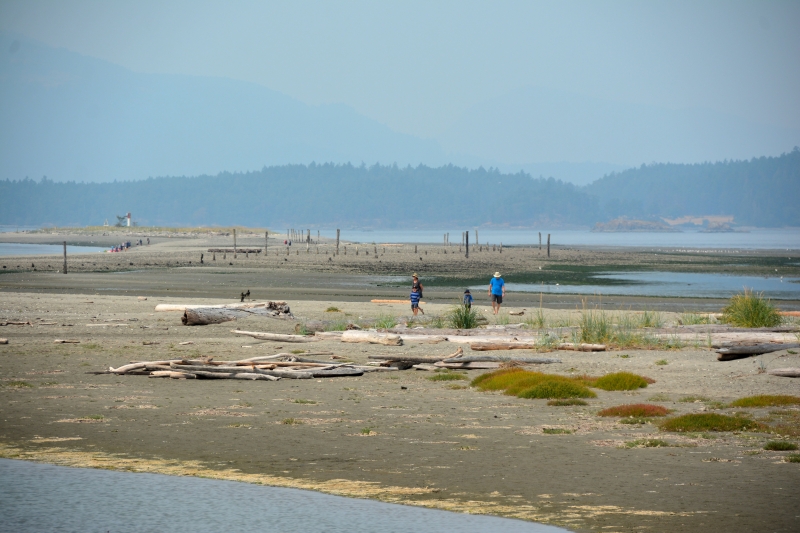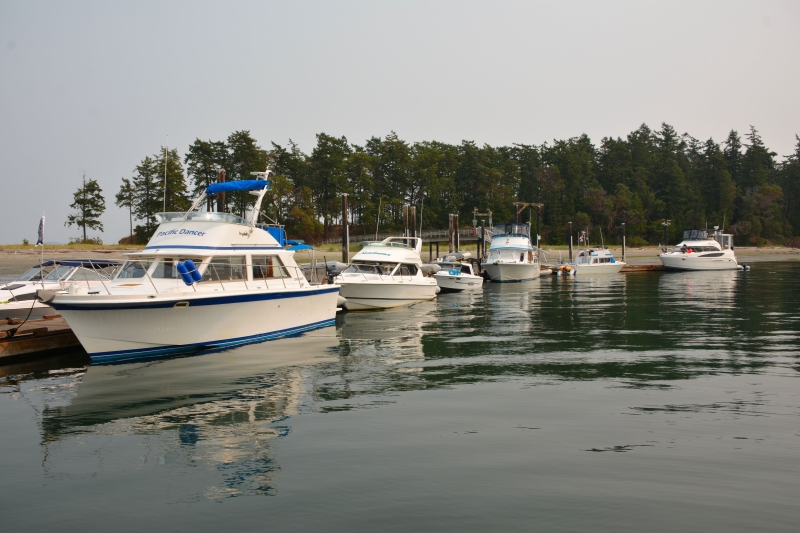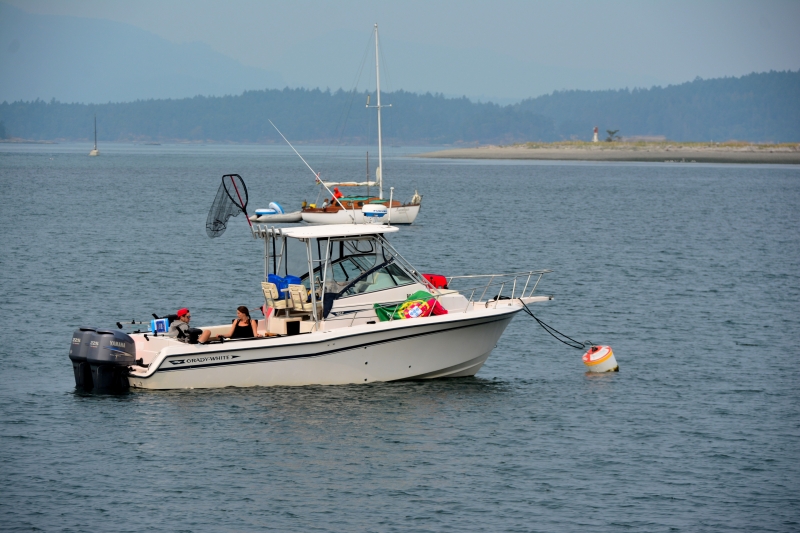Sidney Spit Marine Park BC
21st October 2024
Sandy beaches, extensive tidal flats, salt marshes, rolling meadows, and spectacular views make up Sidney Spit – Gulf Islands National Park, British Columbia. The park is located at the north end of Sidney Island, only 3.5 Nm from the international border and less than 2.5 Nm across Sidney Channel from the city of Sidney.
The Coast Salish Frist Nation People who used Sidney Island as a summer camp say that “Mutcha” was a giant mink that the spirit god, Swaneset transformed because of its uncontrollable greed. The long sand spit is Mutcha’s tail while the beaches are its belly and back. The Hudson’s Bay Company called it “Sallas” in 1859, perhaps for the thick and heavy salal that once covered the forest floor before deer invaded the island. In 1860, Captain Richard of the HMS Plumper renamed it “Sidney” for one of his friends.

The park offers 17 buoys, 300-feet of seasonal overnight first-come first-serve dock space and campsites to reserve. Boaters must note there is no water or power on the dock so need to plan accordingly. There are no garbage facilities, so boaters are required to pack it out.
There is also room for setting the hook over soft sand, but regardless of if tethered to a buoy or swinging on the hook the area is exposed and can be uncomfortable depending on wind direction.
George Courtenay brought industry to the island with the Sidney Island Brick and Tile Company which operated from 1906 until 1915. Courtenay employed an average of 70 workers who were boarded on the island while they produced bricks that are now part of the Empress Hotel in Victoria and Hotel Vancouver. Park visitors can see remnants of the brick factory around the remains of the old wharf.
The Tod family began purchasing land on Sidney Island in 1924 and by 1968 owned all but one-tenth acquired by the government in 1924, which was the nucleus that became Sidney Spit Provincial Marine Park in 1961. In 1981, 264-acres were added to the park, bringing its area to 988-acres and in May 2003, became part of the Gulf Islands National Parks Reserve.

The island has an interesting history of animals being introduced. The first of the introductions began early in the 20th century when George Courtenay introduced Ring-necked Pheasants from China for his hunting resort. Jack Todd, a later landowner of the island, continued the trend by importing Wild Turkeys, Reeves Pheasants, California Quail, Red Squirrels, and Chipmunks. Today, most of the introduced animals are absent on the island.
The most visible of these exotic animals are the Fallow Deer which were imported to nearby James Island from England in the early 1900’s. A number of these small deer swam to Sidney Island in the 1960’s. They have since increased dramatically and have had a devastating effect on tree seedlings and understory plants.
Today Coast Salish people continue to harvest food and help control the Fallow Deer in the Gulf Islands National Park Reserve. From November through February each year, Sidney Spit Marine Park is closed so that they may safely hunt. Harvesting the invasive deer helps restore balance on the island.
The island offers miles of wide well-maintained trails. The mile-long white sand and sun-bleached logs trail going north leads to the tip of the of the spit and a navigation light. As the tide rises and falls, so does its mid-section of the spit disappear and reappear.

The trail heading east leads to a network of trails through the forest. Much of the forest is second growth, with the first growth cut used to stoke the brick kilns which occupied the southern end of the park. Today, a few remains of the factory and tons of broken red bricks can still be found along the shoreline.


